All Amazon sellers deal with pitfalls that can cause their growth to slow down and, for some, even screech to a halt. Today we’ll be tackling five of these pitfalls that may be pushing you to give up on your Amazon reselling business.
Today, you will hear multiple reasons why your Amazon growth is being limited. From not understanding certain key business numbers, to having bad sourcing habits, we’ll show you why you might not be experiencing the growth you probably expect.
We aren’t only here to tell you what problems you may experience; we also give you solutions specific to each problem. Proven strategies, resource suggestions, and mindset shifts — we’ll help equip you to find the success you’re looking for.
Listen on the podcast player below.
Like what you hear? Tell a friend… and be sure to leave us a rating and a review. Here’s how.
Key points from Episode 140:
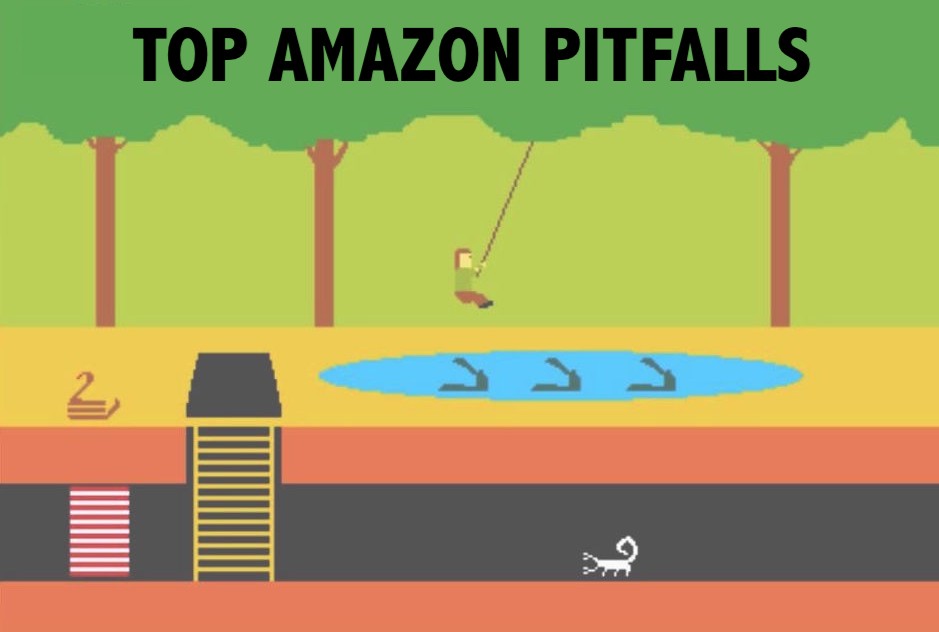 Five pitfalls that may make you want to quit reselling on Amazon altogether.
Five pitfalls that may make you want to quit reselling on Amazon altogether.- One: you may have bought the lie that Amazon is a get-rich-quick plan.
- Two: you may be running your business as a one-person business which limits growth.
- Three: you may not know your numbers and fees.
- Four: you may have some really bad sourcing habits.
- Five: you may be treating Amazon reselling as a hobby and not a business.
Links and resources mentioned in this episode:
-
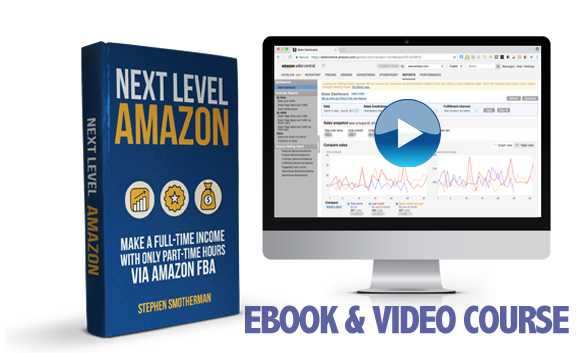
- Podcast Episode 10 – Outsourcing – Make More Money by Working Less on Your Amazon Business
- InventoryLab – Get 30 days free when you sign up
- Keepa – Amazon product price and sales rank tracker
- Keepa 101 Video – Learn how to read a Keepa graph
- Leave a Review of The Full-Time FBA Show
Right-click here and save as to download this episode to your computer.
![]()
 Next Level Amazon
Next Level Amazon
Make a Full-Time Income With Only Part-Time Hours via Amazon FBA
*Next Level Amazon is currently closed to the public, but you can click on any link in this section and sign up for the wait list to be notified when the doors of enrollment open up again.
If you’re looking for a step-by-step process on how to finally turn part-time hours into a full-time income with Amazon, then check out our course, Next Level Amazon: Make a Full-Time Income With Only Part-Time Hours via Amazon FBA.
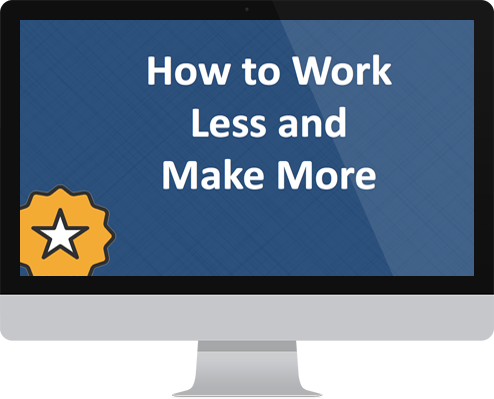 You see, successfully running an Amazon FBA business doesn’t just happen on accident. In fact, there are six proven steps to finally making a full-time income with only part-time hours via Amazon FBA. If you’re tired of not seeing the growth you expect in your Amazon business, then I highly recommend our course, Next Level Amazon.
You see, successfully running an Amazon FBA business doesn’t just happen on accident. In fact, there are six proven steps to finally making a full-time income with only part-time hours via Amazon FBA. If you’re tired of not seeing the growth you expect in your Amazon business, then I highly recommend our course, Next Level Amazon.
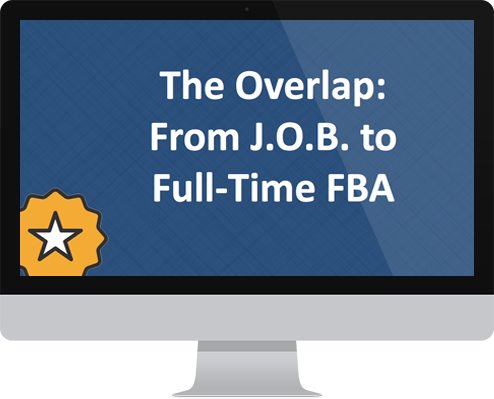 In Next Level Amazon, I outline everything you need to know in order to work less, but make more take-home pay. It’s a strategy that has helped so many people go from working 60-hour weeks just to make ends meet… to truly only working 20 or so hours each week, while still bringing home a full-time paycheck.
In Next Level Amazon, I outline everything you need to know in order to work less, but make more take-home pay. It’s a strategy that has helped so many people go from working 60-hour weeks just to make ends meet… to truly only working 20 or so hours each week, while still bringing home a full-time paycheck.
Join the wait list and be notified when Next Level Amazon opens up again to the public.
![]()
Back to the main page for The Full-Time FBA Show
More Episodes from the Full-Time FBA Show podcast:
Don’t miss an upcoming episode! Subscribe, download episodes, and review the Full-Time FBA Show:
-
-
- Subscribe on iTunes
- Follow on Spotify
- Follow on Amazon Music (or just ask Alexa to “play The Full-Time FBA Show podcast”)
- Follow on iHeartRadio
- Subscribe on Podbean
- Subscribe on Podbay
- Subscribe on Podchaser
-
![]()
Episode 140 Transcript:
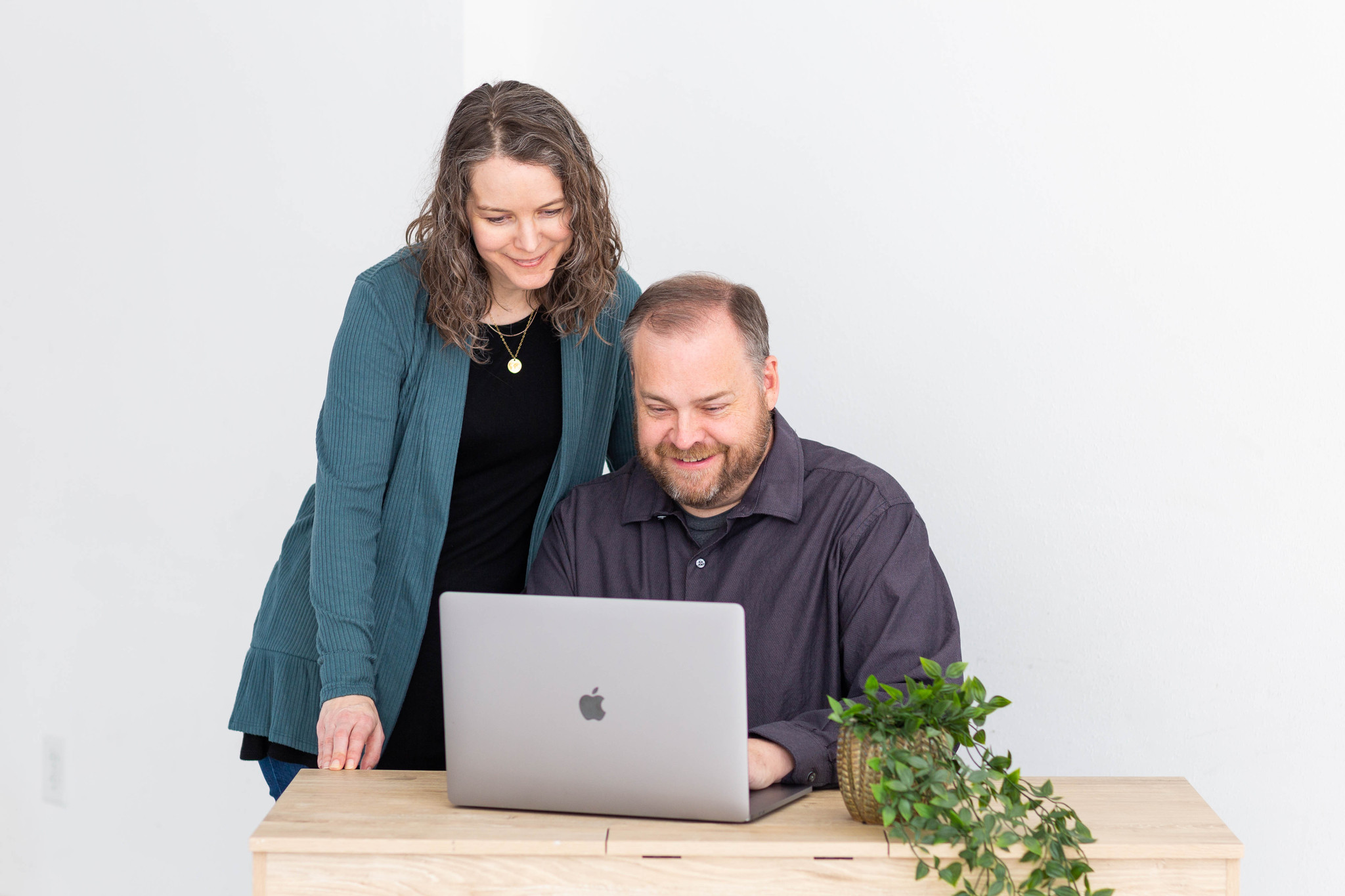
 @j.bollenphotography https://jbollenphotography.com/
@j.bollenphotography https://jbollenphotography.com/[INTRODUCTION]
[0:00:01.8] ANNOUNCER: Welcome to The Full-Time FBA Show. In each episode, it’s our goal to help you turn part-time hours into a full-time income, selling almost anything on Amazon. Now, your hosts of the show, Stephen and Rebecca Smotherman.
[WELCOME]
[0:00:21.0] STEPHEN: Welcome to episode number 140 of The Full-Time FBA Show. Today, we are talking about pitfalls of Amazon sellers that cause them to want to quit reselling and of course, not only the pitfalls but the solutions to get around those pitfalls. With me to talk about this is my bride, my wife, my best friend, my cohost, the list goes on, Rebecca Smotherman. How are you doing?
[0:00:45.0] REBECCA: I’m doing well, that’s a lot of titles there that you just gave me.
[0:00:48.8] STEPHEN: Yes, you’re the boss, you’re awesome and yeah, I can keep going on. I won’t because that’s not the purpose of this show. We’re going to talk about the things that most Amazon sellers struggle with that for those who aren’t able to overcome them, cause them to quit. We want to help you get over that hump and find success. So we’ll talk about that on this week’s episode of The Full-Time FBA Show.
[DISCUSSION]
[0:01:12.3] REBECCA: All right, as we mentioned at the beginning of the show, we’re going to be talking today about the top pitfalls for Amazon sellers that might cause them to consider quitting their FBA business. Just quitting reselling altogether because they are just too hard for them to overcome, it’s causing them to not make profits, it’s causing them to have too many struggles in their business to be successful and so we want to go over those and so you can see if you are succumbing to any of these right now.
If these are any of the things that you’re struggling with, then you can think through the ways that you can get beyond that and see it as just a hurdle to overcome and if you’re not going through any of these right now, congratulations, you are in a great place in your business. But I will say, most, if not all of these are things that we have had to deal with at some point in the history of our business, probably most, not all of them, there’s a couple I’m looking at on this list that I’m like, “Uh, I don’t think we ever did that” but these are all very common.
So if you are approaching your business in any of these ways, you are not out of the ordinary, you are one of the Amazon sellers who just needs a little break from viewing your Amazon business this way. So, let’s get right into it.
[0:02:21.7] STEPHEN: So, in this episode, we’re going to tackle five pitfalls. Did you ever play that game, pitfall, when you were a kid?
[0:02:27.0] REBECCA: An Atari game? Yes, I love that game.
[0:02:29.6] STEPHEN: Yeah, I love listening to the 80s on eight on serious X they really play 80s songs and every once in a while, they’ll do the Tarzan yell as the pitfall guy is going over the pitfall, it’s like, you know [imitates Tarzan yell], anyway, it’s all digitized, it’s awesome. Anyway again, I’m going off topic but the first pitfall that causes a lot of Amazon sellers to consider quitting or deciding to quit is that they bought the lie that selling on Amazon is a get-rich-quick plan.
I mean, there’s a lot of people out there, plug in Amazon get-rich-quick schemes and try to tell people that, “Hey, all you got to do is go find the inventory and sell it on Amazon and boom, you’re a millionaire” and they go out and rent Lamborghinis to take pictures next to and either Airbnb or a really nice house and to take pictures to, but they’re not actually living it, they’re just selling their course and that’s not the true story.
When it comes to selling on Amazon, when it comes to like, any type of entrepreneurial endeavor, it takes time, it takes patience, it takes hard work, it takes dedication and it’s not a get rich quick plan at all. I mean, it’s possible to get rich slowly and consistently over time but it takes a lot of hard work and so the solution to buying the lie that Amazon is a get-rich-quick plan is to understand that it’s not at all.
The solution is patience, being able to have the patience to grow your Amazon business over time. To understand that you’re going to make some mistakes, you can learn from those mistakes. To have the patience to put in the effort to learn both with courses and with experience, how to be in a better Amazon seller and just wait over time.
I mean, a lot of times, people quit selling on Amazon because they say, “Everything I’m sourcing is restricted, anything that’s profitable is restricted.” Well, for many Amazon sellers who have really good seller metrics after six months, restrictions start to fall. They started to open up, different types of brands, different types of categories begin to open up after six months of selling on Amazon and it allows the Amazon seller to sell so much more.
But so many people are quitting Amazon after like, three or four months because it’s not working. I mean, think of it like riding a bike, you spend time learning how to ride a bike here, you’re going to fall, you’re wobbly at first and it takes time, it takes some skinned knees, it takes some mistakes but after a while, you get the hang of it and you can start getting some momentum and the same thing is with selling on Amazon, you need some patience and you can get rich slowly and consistently over time if you stick with it.
[0:04:59.7] REBECCA: Or, you can just make enough money to pay your bills and live a comfortable life and not everything is about getting rich.
[0:05:05.3] STEPHEN: That’s true, very true.
[0:05:06.5] REBECCA: All right, the second pitfall we wanted to caution you about when it comes to running your Amazon business in a way that might lead you to eventually think about quitting is that you might be running your business as a one-person business. You might be the only person who is working for your Amazon business right now and, that is a great way to start.
It’s great to start out that way, to lay the foundation, to be that solo entrepreneur who gets it going but you can only grow an FBA business so far if you are running it as a one-person show or in our case, as a two-person show.
[0:05:42.3] STEPHEN: Yes.
[0:05:43.8] REBECCA: Eventually, you’re going to get to the point where you don’t have enough time to do everything that is needed to grow your business, to increase your profits and your profits are eventually going to plateau because you’re not going to be able to find inventory that has the type of ROI over time that will sustain a business with just one person running it so that it continues to grow. And you’re going to find that the solution to this problem is one that is so easy but it’s also at times, so difficult to take that first step towards.
I know you’ve heard us say it hundreds of times, the solution to this problem is outsourcing. Now, if you are selling via FBA, you’re already outsourcing because you are sending your inventory to an Amazon warehouse and you’re allowing Amazon to catalog it, store it, fulfill those orders for you, you’re allowing them to – and a lot of the times, you’re allowing them to maintain the listings and you are outsourcing many aspects of your business already, your customer service, you’re letting Amazon handle your returns.
Well, there are so many more things beyond just the standard FBA services that you can outsource just about anything that you do to run your Amazon FBA business can be outsourced. So many more aspects of your business than just those standard FBA services. You can outsource everything from sourcing to listing to your accounting, so many aspects. And really, when it comes down to it, if you are running your business as the business owner, as the business manager, then you need to be focusing on the most important tasks and outsource everything else.
You need to consider whether you’re at a point now where you need to outsource your prepping and packing of your inventory to send it to the FBA warehouse, not just the fulfillment of the orders to send to the customers but getting it to the warehouse itself. There’s so many ways you can outsource, we’ve covered this in many episodes in the past but especially in episode number 10 of The Full-Time FBA Show, you can check that out, fulltimefba.com/10 for more information on that.
But just know that if you are trying to run your business by yourself or with just you and one other partner, you’re going to run into the problem of plateauing profits and you’re going to be tempted to think, “This is just not worth it, it is just not profitable enough for me” but never fear, the solution to this problem is outsourcing and you can get beyond this problem, so that you can find success.
[0:08:15.1] STEPHEN: A third pitfall that causes a lot of Amazon sellers to just give up and move on to the next thing is that they don’t know their numbers. Numbers are very important. I mean, the whole thing of the reason why we are trying to sell on Amazon is to make some money. We think it’s a good income opportunity and we want to make some money but just because you’re getting a disbursement from Amazon consistently, does not always mean that you’re actually making money.
Just because your sales numbers are awesome, doesn’t mean you’re actually making money. I mean, it’s important to understand how Amazon fees work, the different fees for different categories, different fees for fulfilling, storage fees, all sorts of types of fees and how those fees take away from your return on investment.
You want to make sure when you’re sourcing inventory that you’ve got enough wiggle room to take care of those fees and so there’s a lot of different types of fees that are a part of selling on Amazon and there’s other different types of things as well, including fees for boxes and fees for services and fees for all the shipping aspect on selling on Amazon.
So all of those kind of stuff can add up and take away from your profits and so, the solution for that is to have something that can organize everything in one place and the solution that we like to use and promote is Inventory Lab. Inventory Lab is an inventory service, management system that is online that you can have Inventory Lab completely sync with Amazon, so that Inventory Lab knows what kind of Amazon fees there are with your inventory that you’re selling and even entering yourself the expenses that you have.
If you don’t happen to have a CPA enter in all the expenses of shipping boxes and tape and ink for the printer and the DYMO label printer and the DYMO labels and all sorts of other types of expenses and have Inventory Lab crunch the numbers and can tell you what your profit or loss statement is, what your margins are, which categories are the best profitable items.
So much stuff that Inventory Lab can do and tell you to help you grow your business but one of the best things is to know and understand your numbers. Marcus Lemonis of the TV show, The Profit says, “If you don’t know your numbers, you don’t know your business” so it’s important to know your numbers and that might be why you’re not wanting to continue selling on Amazon, you just don’t understand how the numbers are working and that’s an easy fix.
Inventory Lab will help you for 30 days free, fulltimefba.com/inventorylab and you can check it out.
[0:10:33.1] REBECCA: The fourth pitfall that we want to share with you today is one that we learned the hard way several years back, many years back now, probably and I would say the first or second year that I was helping Stephen with the business, we learned this problem was affecting our business and it really was making me personally want to quit. I can say that, I’m sure Stephen wasn’t considering it but I was thinking, “What is the point of this?”
That is when you have some really bad sourcing habits, it can lead to thinking that you should just quit. “This is not working, it is not profitable, what is the point?” I would say that what this comes down to with the bad sourcing habits is looking at inventory that you’re considering reselling and thinking about, “What is the sales rank and what is the profitability?” I’m just going to get in there, get out, look at those two numbers and then just keep on moving. That’s all I need to look at when I’m sourcing.
So if those two numbers look good, I’ll buy that inventory, I send it to Amazon, boom, profits, except that it wasn’t working. I was sourcing inventory, we were sourcing inventory looking at those two numbers, the current sales rank and the profitability at that buy cost and we were sending in inventory and it was not going well. We were ending up with inventory that tanked in price that was just sitting at the warehouse and we learned the hard way that nope, you need to look at more than that.
You need to look at the sales rank history, not just the current number, you need to look at what has happened over time with that sales rank. You need to look at the pricing history, not just the profitability today because what if that profitability based on the current price on Amazon is because all of the normal sellers are sold out and all that’s left is one person has a really inflated price? You need to look at the buy box history, what normally gets the buy box for that item.
You need to look at the number of competitors, you need to look at the number of items each of those competitors have in stock. You need to look at whether you’re restricted or approved to sell these items. There are so many more things that you need to consider when you are sourcing, not just those two factors. There is also an easy solution to this, just like the other things we’ve mentioned so far, all of these are problems only if you just stay where you are and don’t expand to look at the solutions that are out there for Amazon sellers.
Whether it’s third-party services or just little tweaks that you need to make in your business and for this one with bad sourcing habits, the solution is the program Keepa. So we started using Keepa when this problem became – when we noticed that this problem was happening in our business that we were just making some really bad sourcing decisions. We started looking into Keepa several years back and realized, “Hey, this program has all of the information we need to make decisions based on those things that I just listed out.”
Sales rank history, pricing history, buy box history, number of competitors, number of competitors, number of items the competitors have in stock, all of those things can be seen in the Keepa program for every item, well, almost every item in the Amazon catalog and can help you make so much better decisions so that your inventory that you’re sending into Amazon is going to make you profits not cause you to lose money or cause you to have excessive storage fees or cause IPI score to tank.
You really need to be using Keepa to make these types of smart sourcing decisions before you buy inventory and send it into the warehouse. So you can find out more about Keepa at fulltimefba.com/keepa, that will take you to the program’s website. If you want to know more about how to use Keepa, we’ve got a really great basic tutorial, fulltimefba.com/readkeepa and it will introduce you to the program and show you how to read those graphs on just the basic level and how to get started with knowing how to use that data to make some really great decisions.
So you don’t have to be stuck with making bad sourcing decisions and having bad sourcing habits. There is an easy solution, start using Keepa and you will find that you can get the inventory you need to keep your business going and to grow it and to be successful and it doesn’t have to be a pitfall for you.
[0:14:35.0] STEPHEN: So the last pitfall that we’re going to talk about today and then after this, we’re going to talk about a solution that can help with all of these pitfalls but the last pitfall that causes a lot of Amazon sellers that get them frustrated and causes them to want to quit is because they’re treating Amazon like a hobby and not a business. Now, I totally get there’s a lot of Amazon sellers out there who have Amazon as a hobby.
It is something they enjoy to do on the side, they kind of enjoy a little bit of the income that comes from it. It is more of a hobby but you know what? Hobbies cost money, while businesses can make money and so if you’re really wanting to make a full-time income or even a solid side hustle with Amazon and you want to make sure that every minute that you spend on Amazon helps you make more money, then you need to treat it like a business because a hobby mindset and a business mindset are completely different.
So that’s the solution for this pitfall, there needs to be a mindset shift. If you want to be profitable in the long term, you need to treat Amazon like a business. You need to understand business things, understanding how it works, making really good business decisions and act like a CEO, have that kind of CEO mentality rather than like an employee mentality where you’re just kind of doing this for fun.
So you want to make sure that you are treating Amazon like a business because again, hobbies cost money and hobbies are fine if that’s what you want to do but businesses have the opportunity to make money and if that is your goal, then you need to have that business mindset. And all find of these different kind of pitfalls, whether you’ve bought the lie that Amazon is a get-rich-quick plan, whether you’re just a one-person business, if you don’t know your numbers, if you’ve got really bad sourcing habits or if you treat your Amazon business like a hobby instead of a business, there is a solution that can help you out.
Very soon, we are opening up for 2022 our Next Level Amazon course and with our Next Level Amazon course, we treat and fix all of these pitfalls. All of these pitfalls can be helped by enrolling in our Next Level Amazon course. So if you are wanting to make sure that you’re outsourcing the right way, you want to make sure you really do understand and know your numbers and the right numbers to know and understand, if you want to actually treat your Amazon business like a business instead of a hobby and all of these other pitfalls, we recommend the Next Level Amazon course.
It is only opened up to the public once a year and it’s about to open up soon. If you are listening to this right after the podcast drops, it is not open just yet but it is opening very soon and you can get on the wait list, fulltimefba.com/nextlevel. You can join the wait list and the moment the doors are open, we will send you an email letting you know about Next Level Amazon. You can check out the course and see if it is right for you.
We’ll also let you know about upcoming webinars, they’re going to help you with Next Level Amazon and other things that can help you grow your Amazon business but Next Level Amazon course, again, just open to the public once a year and it’s about time. If you are listening to this way in the future, hi, I hope the future is awesome but you can also go to that same link and sign up for the Next Level Amazon wait list for when it opens up again next year.
So fulltimefba.com/nextlevel is where to go to get on the wait list or hey, if that link goes straight to the Next Level Amazon page, check it out, see if it is right for you and see if it can help you take your Amazon business to the next level and finally turn part-time hours into a full-time income selling on Amazon.
[CLOSING CONVERSATION]
[0:17:52.5] REBECCA: Well, that’s all we have for you today on this episode of The Full-Time FBA Show. As a reminder, you can find the show notes for this episode, as always, at fulltimefba.com/140 because this is episode number 140 and you will find there any of the links we have mentioned in this episode as well as the transcript if you want to look back and take any notes or read through the transcript of the show.
[0:18:17.5] STEPHEN: Next week on the show, we are going to discuss The Six Pillars of Achieving Long-term Success with Amazon FBA. I look forward to talking to you about that next week on The Full-Time FBA Show.
[OUTRO]
[0:18:31.9] ANNOUNCER: That is all for this episode of The Full-Time FBA Show. So head over to fulltimefba.com/podcast, where you will find the shownotes and links from this episode. While you’re there, subscribe to our newsletter where you’ll get several free downloads of our popular and helpful Amazon FBA resources. Now, take action on what you have learned today so you can find success at turning part-time hours into a full-time income with Amazon FBA.
[END]
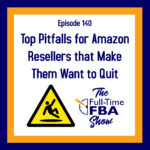

Leave a Reply